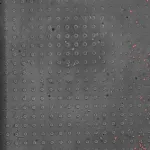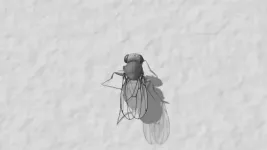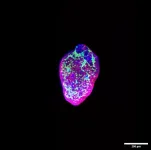(Press-News.org) The macrophage is one of the body’s most important inhabitants. Meaning “big eater” in Greek, this immune cell consumes and digests problematic elements from microbes and cancer cells to dust and debris. Macrophages are especially important in the lungs, where they both fight bacterial infection and clear the lungs of excess surfactant, a protein- and lipid-rich layer that’s essential to healthy function but can create a sticky buildup if not controlled.
In a recent study, investigators from Rockefeller University and other institutions have discovered a never-before-documented genetic disorder that causes the improper functioning of these cells.
The researchers made their discovery by drawing an unexpected connection between a select group of sick children. Throughout their lives, these nine children had battled severe diseases such as pulmonary alveolar proteinosis (PAP), progressive polycystic lung disease, and recurrent bacterial and viral infections that left them gasping for breath from often cyst-plagued lungs.
But as genomic data revealed, the children shared another characteristic: the absence of a chemical receptor that is supposed to call alveolar macrophages into action. It’s the first time that this missing receptor, called CCR2, has been linked to disease. The researchers, including Rockefeller’s Jean-Laurent Casanova and Institut Imagine’s Anna-Lena Neehus, recently published their results in Cell.
The study also found that the children are missing half of their alveolar macrophages, which are located in the air sacs of the lungs.
“It was surprising to find that CCR2 is so essential for alveolar macrophages to properly function,” says Casanova. “When it comes to lung defense and cleanup, people without it are operating at a double loss.”
Chemical communication
More formally known as C-C motif chemokine receptor 2, CCR2 sits on the surface of alveolar macrophages, a kind of monocyte (or white blood cell). It responds to the presence of a chemical ligand, or binding molecule, known as CCL-2, which is also expressed by monocytes.
The receptor and ligand work together to summon macrophages to the site of an infection, and to maintain the appropriate level of surfactant; too little can lead to collapsed lung tissue, and too much can result in narrowed airways.
It was among these immune cells that first author Neehus, of Casanova’s lab at the Institut Imagine in Paris, was seeking evidence of genetic deficiencies that might alter their behavior. While combing through the genomic data on 15,000 patients in a database, she found two Algerian sisters, then aged 13 and 10, who’d been diagnosed with severe PAP, a syndrome in which surfactant builds up and the gas exchange that takes place in alveoli is hindered.
About 90% of PAP cases are caused by antibodies that cripple a protein that stimulates the growth of infection-fighting white blood cells. The girls, however, didn’t have the PAP autoantibodies. Instead, they had no CCR2—a newly identified genetic mutation. Perhaps its lack was connected to their pulmonary conditions, Neehus thought.
“It looked interesting and promising,” she recalls.
She soon found seven other children in the cohort who had the same CCR2 mutation and serious lung conditions: two more pairs of siblings, and one trio of siblings. They were from the United States and Iran.
Diminished capacity
To explore the impact the variant might have on the children, the researchers analyzed the children’s clinical histories, lung tissue samples, and genetic data.
Several key findings emerged. “First we discovered that these patients have only half the normal counts of pulmonary alveolar macrophages, which explains the different types of lesions they have across the pulmonary tissues,” says Casanova. With only half a crew, the reduced cleanup unit couldn’t keep up with its workload, leading to tissue injury.
The macrophages were otherwise normal, as were the children’s other immune cells.
Without CCR2 signaling, monocytes have no idea where they’re needed. In the study, a live-imaging analysis of the monocytes from the lungs of a 10-year-old girl with CCR2 deficiency showed the cells milling about aimlessly, unsure where to go. (See gif at top.) In contrast, live imaging of monocytes from a healthy control patient shows them migrating in the same direction, summoned by the teamwork of CCR2 and CCL-2.
A troubled inheritance
This directionlessness also makes those with a CCR2 deficiency more susceptible to mycobacterial infections, because the macrophages can’t find their way to the tissue clusters where mycobacteria take up residence, and thus digest the invaders.
This had dire effects for three of the children in the study, who developed bacterial infections after being vaccinated with a live-attenuated substrain of Mycobacterium bovis, an agent of tuberculosis. Their immune systems failed to assemble a legion of macrophages at the vaccination site in the shoulder, causing tissue destruction or hard nodes that had to be surgically removed, or lymph node infections. (All of the children were effectively treated with antibiotics.)
The children inherited the deficiency from their parents—and yet their parents were healthy. “Each of the parents carries one disease copy of the gene, and both parents gave the affected copy to their children,” says Neehus. “The parents aren’t affected because they each only have one copy, whereas the kids have two.”
Several children were the result of consanguineous marriages, in which the parents are related. The offspring of such pairings have a higher risk of inheriting the mutation that causes CCR2 to disappear.
The diagnostic test
The absence of CCR2 leads to another effect: an excess of the chemokine CCL-2. Lacking its receptor, CCL-2 builds up in the blood and plasma. This outcome may provide a diagnostic test for screening patients with unexplained lung or mycobacterial disease; the detection of high CCL-2 levels could provide some clarity about the condition’s genetic underpinnings.
In future research, Casanova and his team will mine their database of genomes for patients with gene mutations in CCL-2 rather than in its receptor, CCR2, to understand how such errors may influence the development of disease.
Neehus says, “With more follow-up studies, we could potentially cure the patients by using gene therapy to correct the mutation.”
END
Newly discovered genetic malfunction causes rare lung disease
2024-02-08
ELSE PRESS RELEASES FROM THIS DATE:
Even with resolution, acute kidney injury in newborns can be life-threatening from very first episode
2024-02-08
Our resilient kidneys are invaluable members of the body’s purification system, and they excel at bouncing back after injury. This even holds true for most sick infants in the neonatal intensive care unit. Because of this remarkable ability, dips in kidney function in infants were often overlooked historically in favor of other pressing diseases or symptoms.
But physicians and researchers have shown increased interest in understanding kidney health in newborns and young infants within the last decade, leading to the AWAKEN study (Assessment of Worldwide Acute Kidney Epidemiology in Neonates). With initial ...
High-profile incidents of police brutality sway public opinion more than performance of people’s local law enforcement, new study from NYU Tandon reveals
2024-02-08
National media coverage of police brutality influences public perceptions of law enforcement more than the performance of people’s local police departments, according to data analysis from NYU Tandon School of Engineering, challenging the assumption that public confidence in police depends mostly on feeling safe from local crime.
In a study published in Communications Psychology, a NYU Tandon research team tracked media coverage of police brutality in 18 metropolitan areas in the United States – along with coverage of local crimes – and analyzed tweets from those cities to tease out positive attitudes from negative ...
Why politics bring out the worst in us
2024-02-08
Tap into any social media platform, turn on the television or cue up a podcast, and it is easy to find examples of hypocrisy or bad behavior in political discourse, and new research from University of Nebraska–Lincoln political scientists may explain why.
The findings from a large survey study, co-authored by Kyle Hull, Kevin Smith and Clarisse Warren, demonstrate the willingness of people to bend their morals — even behave unethically — when engaging in the political realm.
Results also suggest that hostility toward outgroups (i.e., opposing party) is the driving factor for the moral ambiguity exercised ...
How fruit flies control the brain's "steering wheel"
2024-02-08
When we walk down the street, we have an internal sense of which way we are heading, from looking at street signals and physical landmarks, and also a sense of where we’d like to go. But how does the brain coordinate between these directions, doing the mental math that tells us which way to turn?
Now, new research describes such a neural process in fruit flies, providing insight into how an animal’s brain steers it in the right direction. The study, published in Nature , shows how neurons that signal the direction in which a fly is currently oriented work together with neurons that signal the direction in which way the ...
SwRI’s Dr. Alan Stern named AIAA Fellow
2024-02-08
SAN ANTONIO — February 8, 2024 —Dr. Alan Stern, a planetary scientist and associate vice president of Southwest Research Institute’s Space Sector, has been named a Fellow of the American Institute of Aeronautics and Astronautics (AIAA). Fellows are recognized for their notable and valuable contributions to the arts, sciences or technology of aeronautics and astronautics. AIAA cited Stern “for outstanding contributions to the exploration of the solar system and the development of commercial spaceflight.”
“I am honored beyond words to be named an AIAA Fellow and thank my nominators very much, including SwRI Vice President Dr. Ben Thacker, who led the nomination,” ...
Visualising multiple sclerosis with a new MRI procedure
2024-02-08
Multiple sclerosis (MS) is a neurological disease that usually leads to permanent disabilities. It affects around 2.9 million people worldwide, and around 15,000 in Switzerland alone. One key feature of the disease is that it causes the patient’s own immune system to attack and destroy the myelin sheaths in the central nervous system. These protective sheaths insulate the nerve fibres, much like the plastic coating around a copper wire. Myelin sheaths ensure that electrical impulses travel quickly and efficiently from nerve cell to nerve cell. If they are damaged or become thinner, this can lead to irreversible visual, ...
Cacao of Excellence announces 2023 Cacao of Excellence gold, silver, and bronze award winners
2024-02-08
AMSTERDAM, NETHERLANDS (February 8, 2024) – Cacao of Excellence, a programme of the Alliance of Bioversity International and the International Center for Tropical Agriculture (CIAT) announced today the winners of the 2023 Cacao of Excellence Awards, honouring excellence in the cultivation of cacao, while also supporting and encouraging a more sustainable sector. The full list of Gold, Silver and Bronze winners can be found below and on the Cacao of Excellence website.
The winners were announced ...
How nearly identical RNA helicases drive “mRNA export” via distinct protein complex pathways
2024-02-08
Genetic expression, often leading to protein synthesis, requires a complex coordination of molecular machinery across several stages. A vital step in protein-coding gene expression is messenger RNA (mRNA) export, which involves shuttling mature mRNAs from the cell’s nucleus to the cytoplasm.
The mRNA export process relies on mRNA–protein complex formation, with the evolutionary conserved ATP-bound TREX complex playing a pivotal role. Among its components, the RNA helicase UAP56 is perhaps the most important one during its assembly. Not only does UAP56 participates during mRNA splicing in some transcripts, but it also recruits ...
Heart organoids simulate pregestational diabetes-induced congenital heart disease
2024-02-08
An advanced human heart organoid system can be used to model embryonic heart development under pregestational diabetes-like conditions, researchers report February 8 in the journal Stem Cell Reports. The organoids recapitulate hallmarks of pregestational diabetes-induced congenital heart disease found in mice and humans. The findings also showed that endoplasmic reticulum (ER) stress and lipid imbalance are critical factors contributing to these disorders, which could be ameliorated with exposure to omega-3s.
“The new stem cell-based organoid technology employed will enable physiologically relevant studies in humans, allowing us to bypass animal models and obtain more information ...
New study points to supply chain disruptions if the FDA removes ineffective decongestant from the market
2024-02-08
PITTSBURGH, Feb. 8, 2024 — In a new study of nasal decongestant purchasing patterns, researchers at the University of Pittsburgh School of Medicine found that phenylephrine remained the most popular choice year after year, despite decades of concerns over a lack of evidence supporting its effectiveness.
Published today in JAMA, the research letter points to a coming wave of supplychain disturbances if the Food and Drug Administration (FDA) moves to pull oral phenylephrine from the shelves, as recommended by an FDA advisory panel in 2023 that found the medication ineffective.
The researchers ...








